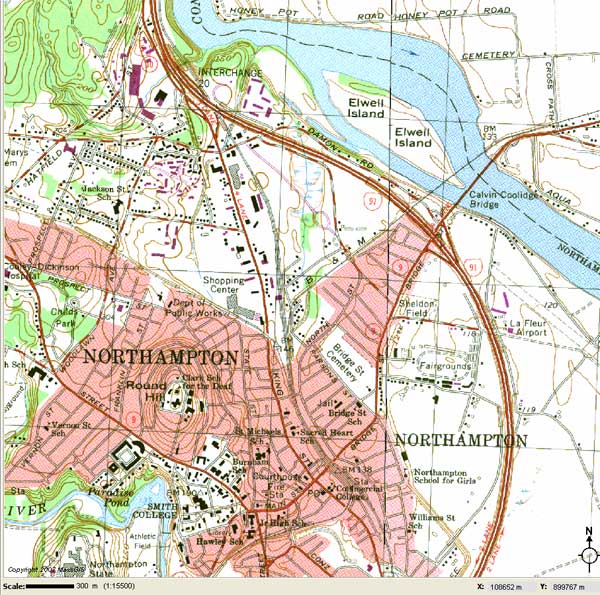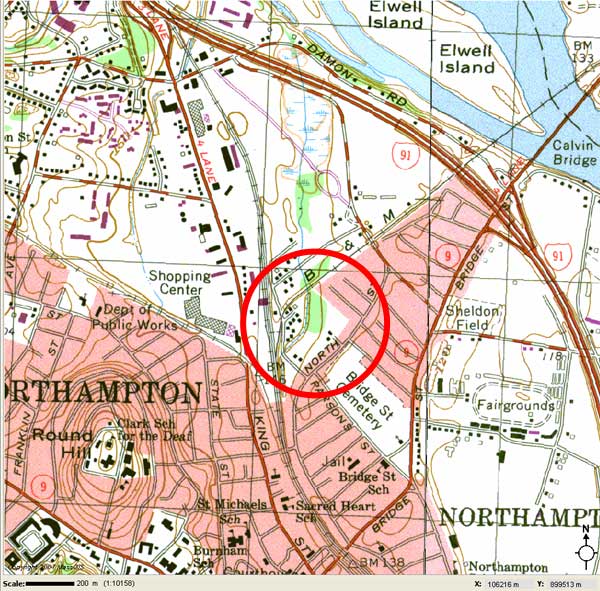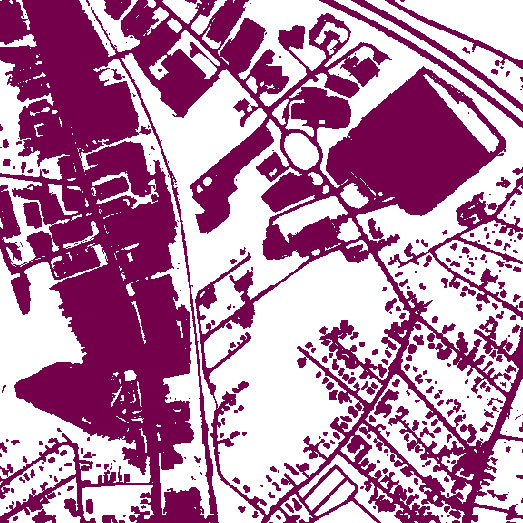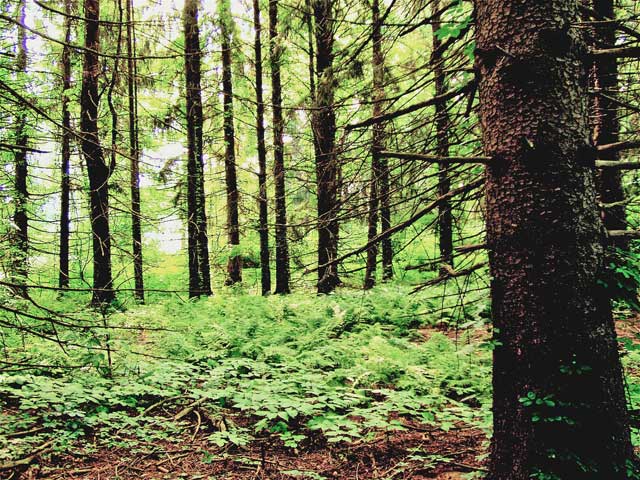The solid green areas represent woodland:


The following view dramatizes the considerable amount of impervious surface already in the area, especially around King Street and the Coca-Cola plant. Kohl’s “infill” project will convert a significant amount of the remaining greenspace to impervious surface. The presence of Millyard Brook shows that this area serves as a natural sink for water in the neighborhood.

See also:
Northampton Redoubt: “North Street area citizens join together”
Situated close to a wetland area, the project calls for the creation of five detention ponds to handle the storm water run-off that will be created by adding asphalt and buildings to an area where impervious surfaces do not currently exist. The project proposes to eliminate part of a forest that supports Northampton’s urban ecology.
Northampton Redoubt: Urban Ecology, Planting Trees, and the Long-Term View
EPA: Urban Heat Islands The term “heat island” refers to urban air and surface temperatures that are higher than nearby rural areas. Many U.S. cities and suburbs have air temperatures up to 10°F (5.6°C) warmer than the surrounding natural land cover.
The term “heat island” refers to urban air and surface temperatures that are higher than nearby rural areas. Many U.S. cities and suburbs have air temperatures up to 10°F (5.6°C) warmer than the surrounding natural land cover.
The heat island sketch pictured here shows a city’s heat island profile. It demonstrates how urban temperatures are typically lower at the urban-rural border than in dense downtown areas. The graphic also show how parks, open land, and bodies of water can create cooler areas.
Gazette: “Trees add to city’s appearance, well-being”
Irony of Infill: You Have to Drive to Enjoy Nature
Photo Essay: The Forest Behind View Avenue
NSNA member Thomas McCurry has taken some beautiful pictures of the forest behind View Avenue. Much of this area is imperiled by Kohl Construction’s proposal to build 31 condo units (mostly 3- and 4-bedrooms) in the area…
